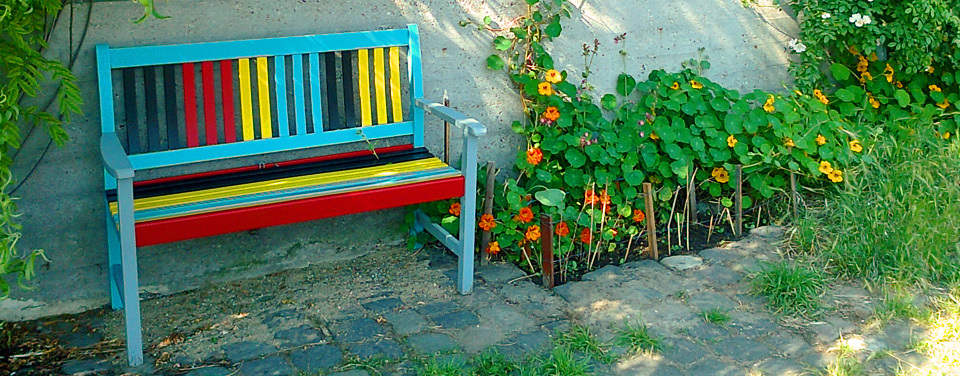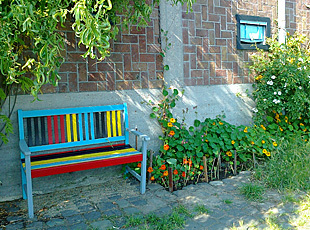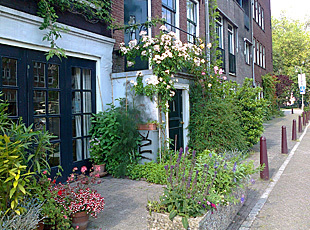Pavement Gardens

Pavement Gardens
For a capital city, Amsterdam presents a remarkably leafy, flowery ‘face’ to the world. It owes its beauty in no small part to the pavement gardens. As soon as you walk along the canals, the intersecting streets, squares, and greens, you will be struck by the amount, variety, and size of plants growing beside you as you stroll by. You can see much of this just outside the shopping-area; it requires only a 5-minute walk.
Call them ‘pavement gardens’, ‘street gardens’, ‘façade gardens’, or ‘sidewalk gardens’, they are everywhere and they are gorgeous. They lighten and brighten any city dullness.
Pavement gardens are unique and come in all shapes and sizes from tiny to tinier and they flourish at the foot of buildings, on steps, on ledges, in nooks and niches, wherever there's a spot to suit the plant.
They can just happen in a wild sort of way, or they can be created and tended. They are often a perfect example of ‘less is more’.
Some are tiny and home to tiny flowers, others are tiny but home to massive wisteria, clematis, roses, jasmine that climb to the fourth or fifth floor.
You'll see wonderful colour in these tiny gardens but the leafy ones are a delight too – there may be a shady vine or a little fruit tree, plus a couple of other plants with lovely green foliage.
Pavement gardens may have beautiful garden seats and elegant pots and urns. Or they may simply be a collection of battered seats and chairs, pots and containers. It doesn't matter, they always enhance, and they exude a happy, ‘let's make the most of things’ atmosphere.
Those living on the ground floor have ‘jurisdiction’ over the pavement garden. In some cases these are owner-residents; in many cases they are tenants who just want to make their patch perfectly lovely. The state of their garden is totally to their credit. The corporation does offer assistance and will remove street tiles if requested; the rest is up to the resident. In general, you will be able to distinguish the ‘home gardens’ from the ‘corporate gardens’. The former have the natural look while the latter are usually very symmetrical.


